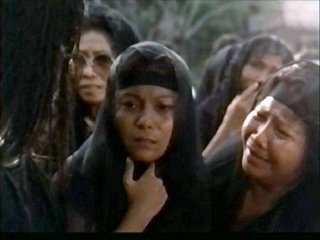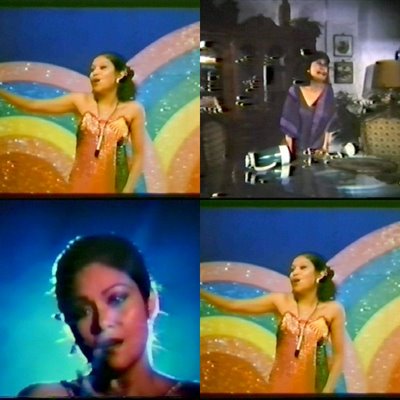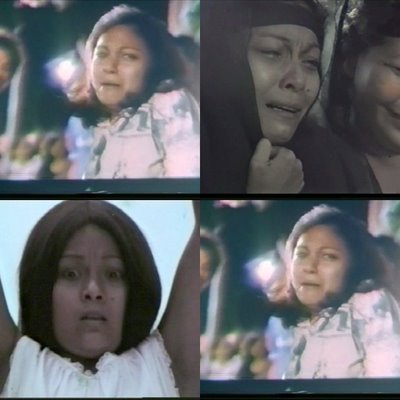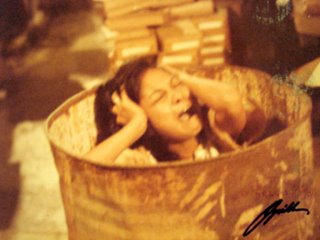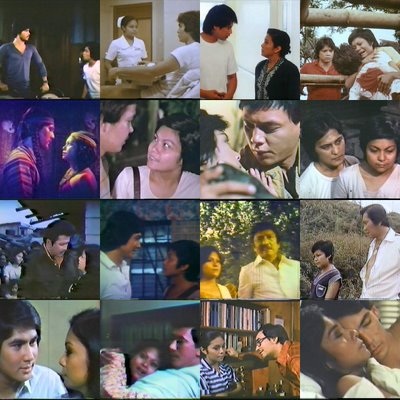NORA AUNOR: BEST ACTRESS OF 1982 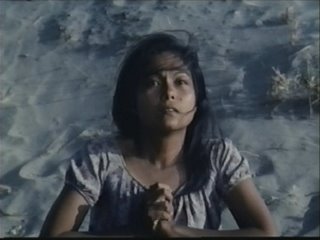
The Best Of 1982
by Mina Paras
As Published In Parade Magazine January 19, 1983 Pages 4-7
This year’s bumper crop of movies plus the inspired performances of old reliables and even, surprisingly, from greenhorns in the trade, made the task of critics and observers of the local movie industry a little harder than usual. Parade asked five critics, a television host-producer, and a prize-winning novelist for their choices as the pick for 1982. Not surprisingly, the Parade panel disagreed in some categories and were unanimous in others.
Wilfrido Nolledo
Novelist, Screenwriter, Film Critic
Ding Nolledo belongs to the Scriptwriters Guild and so, for the past year, has confined himself to reviewing foreign movies. "For delicadeza," so he patiently explains, after having thought of choices for 1982 (which turned to be a list of imported films, a result of miscommunication).
Pressed for his opinions, though, he confesses to liking Himala "very much" but mentions that he hasn’t seen Oro Plata Mata. Himala, Ding justifies, because the film exudes "raw power," not to mention the excellent acting and the direction, which was like early Fellini, especially the middle part."
Ding doesn’t agree with Moral’s rave reviews because "I’ve seen Moral in about 369 other films." It’s not that original, he implies.
As for best actress, it’ll have to be Nora in Himala. "She reminds me of the young Anna Magnani. Besides, the script fitted her to a T. The role practically coincides with what she is in real life."
Mario Hernando
Film Critic
Best Films:
(in the order of preference)
Oro, Plata, Mata and Batch ’81
Relasyon and Himala
Moral
Best Directors:
(in no particular order)
Ishmael Bernal for Relasyon and Himala
Peque Gallaga for Oro Plata Mata
Mike de Leon for Batch ’81
Actresses:
Vilma Santos for Relasyon
Nora Aunor for Himala and Uod At Rosas
Sandy Andolong for Moral and Oro Plata Mata
Gina Alajar for Moral
Actors:
Mark Gil for Batch ’81 and Palipat-Lipat, Papalit-Palit
Joel Torre for Oro Plata Mata
Christopher de Leon for Relasyon
"Most movies are usually flawed, and those in my list are no exception. However, apart from the standard criteria I am applying to them (the classic from and content balance), I am giving much weight on impact and emotional power. So, my top two are Oro and Batch. Himala is an ambitious film and much flawed, but it has visual beauty and emotional wallop. Relasyon is more modest in scope, but I think is more successful on its own terms. Moral has many good things going for it, from direction and writing, to performances, but it does not match the four other films in impact (though it has some moving moments) and originality."
Hammy Sotto
Film Critic
Hammy Sotto, Manunuri, must have been inspired by the witching hour (translate that into 1:05 a.m., 11th hour as of presstime) so much so that he raves - and bewitching so - about his choices for the best of 1982.
Says Hammy on the phone: "I pick Oro Plata Mata as best film because it’s a landmark in Visayan dramaturgy. Never before has the carefree life of the sugar baron been so accurately and meticulously recorded on film.
"Peque Gallaga doesn’t pretend to any fixed ideology and the film can only be taken as a set of reminiscences of a ‘Golden Age’ forever gone. But Peque’s brilliant direction lifts the material above its nostalgia trip and makes out of it a vivid behavioral comment on the Saint/Beast known as the Filipino."
His other choice is Batch ’81. States Hammy: "The most interesting aspects of Batch ’81 are the invisible ones. On the surface the film tackles the initiation of aspiring neophytes into quasi-tribal fraternities. But Mike de Leon consciously or unconsciously imbues the action with so much double meaning, the gory initiation rites become a disturbing metaphor of our times.
"I don’t find particular merit in any actor or actress but I must make special mention of Ariosto Reyes as a supporting actor in Uod at Rosas wherein his facial gestures measured to the milliliter the abrupt descent into suicide."
Peque Gallaga as director turned out as a real surprise in Oro, Hammy claims. "This is the first film of Peque that I saw. He shows a very solid grasp of blocking and his camera angles were perfect." Hammy explains that "the first things I look for when I watch a movie is the blocking and positioning of camera because to me that reveals directorial command."
Hammy adds: "Peque was able to bring the movie to life with rich details culled from his own experience, which was not, could not have been, scripted. He gives it an energy that could only have come from experience and firsthand knowledge."
Celso Carunungan
Screenwriter, Novelist
Celso Carunungan makes it a point to see a movie once a month however busy he is serving on seven boards, just to "keep in touch."
He considers Himala the best choice for 1982 for a lot of reasons: "For one thing, I believe it has what’s been lacking in our movies for a long time—a good story. Lack of good materials, stereotype characters, and predictable plots have been plaguing the local movie scene for a long time, and most movies are strengthened only by bold scenes.
"Himala is beautiful in the sense that it’s never been done before and it’s honest. It reminds me of Biyaya Ng Lupa, a movie I wrote during the Sixties.
"To me, the acting of Nora is one of the highlights of the film. I didn’t expect her to act like that. She was very disciplined. There was no attempt to glamorize her and make her pretty. It was all honest.
"Dindo Fernado I consider the best actor in the land. It’s a pity that he’s never given a good vehicle.
"For the first time, I’m opening the subject: I’m doing the story for a movie on Rizal with Samuel Bronston (producer of El Cid, 55 Days in Peking) and of course, he’ll get an internationally famous actor-star for the title role but I want to have Dindo in the movie. I haven’t talked to him about the project yet, though.
"There is a kind of artistic integrity in Dindo that I don’t find in others. It comes from his confidence, his maturity.
"I think Ishmael Bernal is the best director and I’m looking forward to work with him. He is more sensitive and more poetic than the others."
Nestor Torre, Jr.
Film Critic
Nestor Torre gave a pretty little speech of apology for "Not having seen most of the movies shown the past year since I’ve been busy with my stage and theater productions, "but of the ones he’s seen, he qualifies, he finds Batch ’81 the best movie made in 1982.
"The movie had something very important to say and it communicated it very well." His choice of best director naturally ties in with his choice of film. "Mike de Leon did his job so well," he reiterates.
As for his choice of best actor, it’s Mark Gil, "unless I’ve forgotten somebody else." It’s Mark Gil because "he was perfect in that role as somebody who was waiting to discover the violence within him."
As for the best actress, it’s Nora Aunor in Himala. "It was a good role, and she communicated it very well. At least, Nora wasn’t api here for a change, It was quite a complicated role, but she handled it very well."
Other choices were Gina Alajar and Lorna Tolentino in Moral. "Gina was very good in Moral, and she would have been perfect, but the problem was her makeup and costume which made her look freakish in the movie. I mean, no one looks like that in real life." (Just for the record, this writer disagreed. Try Angeles City.)
Vilma Santos, Nestor notes, is admittedly a "very hard worker but her physical structure really makes it difficult for her to be really effective—hindi malalim—and her voice is not that expressive."
Nestor adds, though, that, once in a while, Vilma "transcends her physical limitations, as in Rubia Servios."
Behn Cervantes
Filmmaker, Film Critic
Behn’s choice for best movie of 1982 comes easy, with one qualification (he has not seen Oro, Plata, Mata). "It’s Batch ’81 because it was innovative and more daring. The technical aspect was also great. The cinematography was good and the film was very well edited. Everything in it was tightly woven in. Also, it’s the kind of film which leaves you gaping. I mean there are films which you can’t just watch and be satisfied with what you’ve seen. Batch ’81 is one such movie. You have to discuss it afterwards."
Behn puts Moral in second place "because it presented a contemporary view not only of women in society but society as a whole."
Behn’s third choice is Himala. "I enjoyed watching it. It had that certain texture, you know, the superimposition of the supernatural with the mundane. Further, it was a powerful reflection of capitalistic tendencies in society and of the materialistic greed that results from it."
For best actor, "it’s Mark Gil, especially in Batch ’81. While Christopher de Leon is also one of my favorites, being very good in Relasyon, Mark showed more guttered reaction in Batch ’81 than Christopher did in any movie. With Mark, it seemed to come from his guts."
As for the choice of best actress, "mahirap iyan," Behn admits spontaneously. "It’s a difficult choice between Gina Alajar in Moral and Nora Aunor in Himala. Gina was beautifully flamboyant and effective as the funky character in Moral, while Nora was very cinematic in Himala. Nora is one actress who knows how to use her medium.
"Vilma is also good. She knows her craft, but somehow, at the moment of truth, physically she doesn’t quite hit me. There’s something very cutesified about it.
"As for best director, it’s Mike de Leon, of course. For me, the best film should tie in with the best director."
Armida Siguion Reyna
Film Actress, Producer
Armida has said it in her TV show Let’s Talk Movies and she’s saying it again: her choice for best movie not only for the filmfest but for the entire 1982 is Moral.
"It’s very ‘today,’ NOW. You really get to identify with the characters in the movie. Like, in any case, there is a little of myself in each of the four characters, from Gina to Lorna and to Sandy and Anna. Technically, there’s a little flaw, but the camera work was adequate; bagay sa movie and that’s what counts. Editing is good, and the music, although nothing outstanding, was okay. Overall, the script and acting were very good, and for me, the story and direction carry the burden of the weight of the movie."
Certainly, Armida admits, the movie can still stand improvement, but she particularly rates Marilou Diaz Abaya, her choice for best director, for having been able to orchestrate the performers so well so that "you’re not aware anymore that they’re acting. You just get involved in the movie."
Armida adds: "Marilou knows her medium, and she enjoys the advantage of having her husband as editor of the movie. She also handles her actors very well, she can compete with… no, she equals Lino Brocka already."
After Moral, Armida chooses Oro, Plata, Mata and Cain At Abel, respectively, as among 1982’s best. She does not dislike Batch ’81, "it’s just that I don’t like those types of movies." To her, one has to be able to identify with the movie. "It’s also a kind of instinctive reaction. If I don’t like it, I don’t like it."
Armida chooses Vilma Santos as best actress for her performance in Relasyon. "I can’t explain my choice in the beautiful language of the Manunuri but I go by gut and alam kong maganda." She is also more inclined toward Vilma because the actress made a number of good movies last year.
For best actor, "I choose Mark Gil in Batch ’81 and Palipat-Lipat, Papalit-Palit and Katas Ng Langis. He was a revelation and he showed skill. He knows what tools to use, the techniques." Armida sort of disqualifies Christopher de Leon from the picking "simply because napaka-competent na ni Chris."
Wih Special Thanks To Nestor De Guzman




